
One of the biggest challenges in cooking old-school barbecue is maintaining a low, steady heat as your pork shoulder or beef brisket cooks. That's especially important with brisket, a tough and lean cut of beef that becomes even more leathery if it's exposed to high heat. One solution is to use an offset smoker, which removes the actual coals to a separate firebox and then routes smoke and heat through the main combustion chamber. With a bit of practice, you'll soon be able to maintain your brisket at the steady 225 degrees Fahrenheit it requires.
Step 1
Trim the layer of fat covering the top of your brisket to approximately 1/4-inch thickness. Rub the exposed surfaces thoroughly with your favorite dry spice rub or seasoning paste, then cover the brisket and refrigerate it overnight so the flavors can meld and infuse into the beef.
Step 2
Place the probe of a probe thermometer at each end of the smoker's cooking chamber, so you can monitor its temperature. Light your charcoal. Once it's covered with a good layer of ash, adjust your smoker's vents until the cooking chamber stabilizes at 225 degrees Fahrenheit.
Step 3
Open the lid and put your brisket in the cooking chamber, then quickly close the lid again. The temperature inside the cooking chamber cools briefly because of the escaping heat, but don't adjust the vents. The heat will return slowly to the previous level.
Step 4
Slow-cook the brisket until it's fork-tender, usually at an internal temperature of 195 F to 205 F. This can take as long as 18 to 20 hours for a whole brisket, or 10 to 12 hours for smaller portions. Light fresh batches of charcoal periodically in a chimney style starter, then use those to replenish the coals in your cooker's firebox.
Step 5
Remove the brisket from your smoker and wrap it tightly in aluminum foil, then in several clean towels. Place the bundle in a warmed picnic cooler, and let the meat rest for 1 to 2 hours before slicing it. This is optional, but the rest period makes your brisket noticeably more tender and juicy.
Related Articles
How to Cook With a Reverse Flow Smoker

How to Cook a Brisket in the Ground

How Many Calories Are in Smoked Ham?
How do I Cook a Prime Rib on an Open ...
How to Barbecue Prime Rib Bones

How to Smoke a Sirloin Tip Roast

How to Cook an 8- to 10-Pound Beef ...

How to Cook Barbecue Deer in the Slow ...

How to Use Wood Chips in a Smoker

How to Barbecue Roast Beef
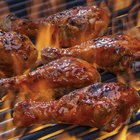
How to Cook Chicken in a Crockpot & ...

How to Cook Beef Teriyaki Jerky in a ...
Do I Cook Ribs Before Putting Them on ...
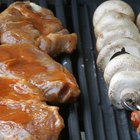
How to Use a Smoker Box for Gas Grilling

How to Cook a Whole Beef Shank Roast
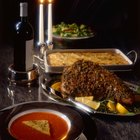
How to Smoke a Leg of Lamb Using an ...

How to Grill and Smoke Swordfish
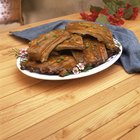
How to Cook Pork Ribs on a Propane Grill

How to Smoke a Brisket With an Offset ...
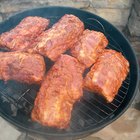
How to Smoke Ribs With a Gas Smoker
References
Tips
- Inexpensive offset smokers can be significantly hotter at the end closest to the firebox. If you're only cooking a single piece of brisket, you can counter this by keeping it near the cooler end of the smoker. To equalize the heat, enthusiasts typically use heavy foil or sheet metal to construct a baffle that directs hot air the length of the cooking chamber.
- To reduce the time your brisket cooks, take it from the smoker when its internal temperature reaches approximately 150 F to 160 F. Wrap the brisket tightly in foil, with a splash of water or sauce to add steam, then return it to the smoker. This technique, called the "Texas Crutch," can shave 2 to 3 hours from your cooking time.
Writer Bio
Fred Decker is a trained chef and prolific freelance writer. In previous careers, he sold insurance and mutual funds, and was a longtime retailer. He was educated at Memorial University of Newfoundland and the Northern Alberta Institute of Technology. His articles have appeared on numerous home and garden sites including GoneOutdoors, TheNest and eHow.
Photo Credits
Creatas Images/Creatas/Getty Images